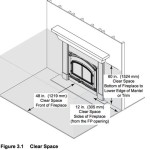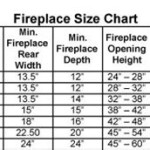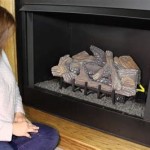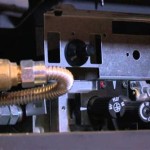Fireplace Hearth Designs: A Comprehensive Guide
The fireplace hearth is a critical component of any fireplace design, serving both functional and aesthetic purposes. Functionally, it acts as a non-combustible barrier protecting the surrounding floor from sparks, embers, and radiant heat. Aesthetically, it provides a visual anchor for the fireplace, contributing significantly to the overall style and ambiance of the room. Its design, therefore, requires careful consideration of materials, dimensions, and adherence to safety regulations.
Selecting the appropriate hearth design involves understanding various options available, each with its own set of advantages and disadvantages. Factors such as the fireplace type (wood-burning, gas, or electric), the room's decor, budget constraints, and personal preferences all play a role in determining the optimal hearth design. This article provides a comprehensive overview of fireplace hearth designs, covering materials, styles, and considerations for proper installation and safety.
The primary function of a fireplace hearth is safety. It prevents accidental fires by containing embers and sparks that may escape from the firebox. Furthermore, it protects the floor from the intense radiant heat emitted by the fireplace. Building codes and regulations often specify minimum hearth dimensions and material requirements to ensure adequate protection. Failure to comply with these regulations can result in safety hazards and legal repercussions.
Material Considerations for Fireplace Hearths
The choice of material is a crucial aspect of hearth design, influencing both its appearance and performance. Common materials include stone, brick, tile, concrete, and metal. Each material offers different aesthetic qualities, durability, and thermal properties. Understanding these differences is essential for making an informed decision.
Stone Hearths: Stone is a popular choice for fireplace hearths due to its natural beauty, durability, and heat resistance. Options range from natural stones like granite, marble, and slate, to engineered stone products that mimic the look of natural stone. Granite is known for its hardness and resistance to staining, making it a practical choice for high-traffic areas. Marble offers a luxurious appearance but requires more maintenance due to its porous nature. Slate provides a rustic, textured look and is relatively easy to clean. The cost of stone hearths can vary significantly depending on the type of stone and its rarity.
Brick Hearths: Brick is a classic choice for fireplace hearths, offering a traditional and warm aesthetic. It is durable, heat-resistant, and relatively inexpensive compared to stone. Brick hearths can be laid in various patterns, such as herringbone, running bond, or basketweave, adding visual interest. However, brick is porous and can absorb stains if not properly sealed. Regular cleaning and sealing are necessary to maintain its appearance.
Tile Hearths: Tile offers a wide range of design possibilities, including ceramic, porcelain, and glass. Ceramic and porcelain tiles are durable, easy to clean, and available in a vast array of colors, patterns, and sizes. Glass tiles provide a modern and elegant look but may be more susceptible to scratching. Tile hearths can be customized to match any decor style, from traditional to contemporary. However, the grout lines between tiles can be challenging to clean and may require periodic sealing.
Concrete Hearths: Concrete hearths have gained popularity in recent years due to their versatility and modern aesthetic. Concrete can be cast into various shapes and sizes, allowing for custom designs. It can also be stained or polished to achieve different finishes. Concrete is durable and heat-resistant, but it is also porous and requires sealing to prevent staining. The cost of concrete hearths can vary depending on the complexity of the design and the finish applied.
Metal Hearths: Metal hearths, typically made of steel or iron, offer a sleek and modern look. They are durable, heat-resistant, and easy to clean. Metal hearths can be powder-coated in various colors to match the room's decor. However, metal hearths can become hot to the touch during fireplace use and may require additional safety measures, such as a protective screen.
Styles and Designs of Fireplace Hearths
The style of the fireplace hearth should complement the overall design of the room and the fireplace itself. Various hearth styles exist, ranging from traditional and rustic to modern and minimalist. Understanding these styles can help in selecting a hearth design that enhances the room's aesthetic appeal.
Flush Hearths: A flush hearth is one that is level with the surrounding floor. This design creates a seamless transition between the hearth and the floor, providing a clean and modern look. Flush hearths are suitable for both wood-burning and gas fireplaces, but they require careful installation to ensure proper fire resistance. The subfloor beneath the hearth must be non-combustible and properly insulated.
Raised Hearths: A raised hearth is elevated above the surrounding floor, creating a visual focal point. Raised hearths can be constructed from various materials, such as stone, brick, or concrete. They offer a more traditional and substantial look compared to flush hearths. The height of the raised hearth can vary depending on the desired aesthetic and the room's proportions.
Extended Hearths: An extended hearth projects further into the room than a standard hearth, providing additional protection from sparks and embers. Extended hearths are often used with wood-burning fireplaces to meet safety requirements. They can also serve as a seating area or a display surface. The dimensions of the extended hearth should be proportional to the size of the fireplace and the room.
Corner Hearths: A corner hearth is designed to fit into the corner of a room, maximizing space and creating a unique focal point. Corner hearths can be constructed from various materials and can be either flush or raised. They are particularly suitable for smaller rooms where space is limited. The design of the corner hearth should complement the room's architectural features and decor.
Floating Hearths: A floating hearth is a modern design that appears to be suspended in the air. This effect is achieved by using hidden supports or cantilevering the hearth from the wall. Floating hearths create a sleek and minimalist look, adding a touch of elegance to the room. They are typically made of stone, concrete, or metal. However, floating hearths require careful engineering and installation to ensure structural stability.
Safety Regulations and Installation Considerations
Proper installation and adherence to safety regulations are paramount when designing and installing a fireplace hearth. Building codes and standards specify minimum requirements for hearth dimensions, material fire resistance, and clearances to combustible materials. Failure to comply with these regulations can result in fire hazards and legal liabilities. Consulting with a qualified contractor or building inspector is advisable to ensure compliance with all applicable codes.
The National Fire Protection Association (NFPA) provides comprehensive guidelines for fireplace safety, including hearth construction. NFPA 211, Standard for Chimneys, Fireplaces, Vents, and Solid Fuel-Burning Appliances, outlines requirements for hearth dimensions based on the size of the fireplace opening and the type of fuel burned. These requirements are designed to prevent sparks and embers from igniting nearby combustible materials.
For wood-burning fireplaces, the hearth should extend at least 16 inches from the front of the fireplace opening and 8 inches beyond each side. If the fireplace opening is larger than 6 square feet, the hearth should extend at least 20 inches from the front of the fireplace opening. These dimensions are intended to provide adequate protection from sparks and embers that may escape from the firebox.
The hearth must be constructed of non-combustible materials, such as stone, brick, tile, or concrete. The materials must be capable of withstanding high temperatures without cracking or deteriorating. Combustible materials, such as wood or carpet, should not be placed on or near the hearth. Clearances to combustible materials, such as walls and mantels, must also be maintained to prevent overheating and fire hazards.
Proper installation of the hearth is essential to ensure its safety and performance. The subfloor beneath the hearth must be non-combustible and level. The hearth materials should be securely attached to the subfloor using appropriate adhesives or fasteners. Grout lines between tiles or stones should be properly sealed to prevent moisture penetration. The hearth should be inspected regularly for cracks, damage, or deterioration. Any necessary repairs should be made promptly to maintain its safety and functionality.
When installing a gas fireplace, the hearth requirements may be less stringent than those for wood-burning fireplaces. Gas fireplaces typically produce less radiant heat and fewer sparks. However, it is still essential to consult with a qualified contractor or building inspector to ensure compliance with all applicable codes and regulations. The hearth should be constructed of non-combustible materials and should extend a sufficient distance from the fireplace opening to provide adequate protection.
Electric fireplaces generally have the least stringent hearth requirements. Electric fireplaces do not produce actual flames or embers, so the risk of fire is minimal. However, it is still advisable to install a hearth made of non-combustible materials to provide a visual anchor for the fireplace and to protect the floor from any potential heat damage. The hearth should be sized to complement the dimensions of the electric fireplace and the room's decor.
In addition to building codes and regulations, it is essential to consider the specific requirements of the fireplace manufacturer. The manufacturer's instructions may specify minimum hearth dimensions, material requirements, and installation procedures. Following these instructions is crucial to ensure the safe and proper operation of the fireplace.
Finally, regular maintenance of the fireplace and hearth is essential to ensure their continued safety and performance. The fireplace should be cleaned regularly to remove creosote buildup, which can pose a fire hazard. The hearth should be cleaned and inspected for cracks, damage, or deterioration. Any necessary repairs should be made promptly to maintain its safety and functionality.

Extraordinary Stone Fireplace Hearth Designs

How To Decorate A Hearth Bhglivebetter Homedecor Homedecorideas Fireplace Decor Mantle
:strip_icc()/101901958-ca10f847d8b54a8d9bb2222d39cd960c.jpg?strip=all)
Best Fireplace Hearth Ideas And Designs Tips

Live Beautifully Before After A Beautiful Kitchen Home Fireplace Living Room

61 Raised Hearth Fireplaces Ideas Home Fireplace Design Remodel

Stone Fireplace Ideas Hearth Slab Wrought Iron And Glass Doors Remodel

How To Build A Raised Fireplace Hearth Design

9 Design Ideas For Updating Or Adding A Fireplace To Your Home

Fireplace Decor Hearth Design Tips

Diy Fireplace Makeover At Home With The Barkers
Related Posts








